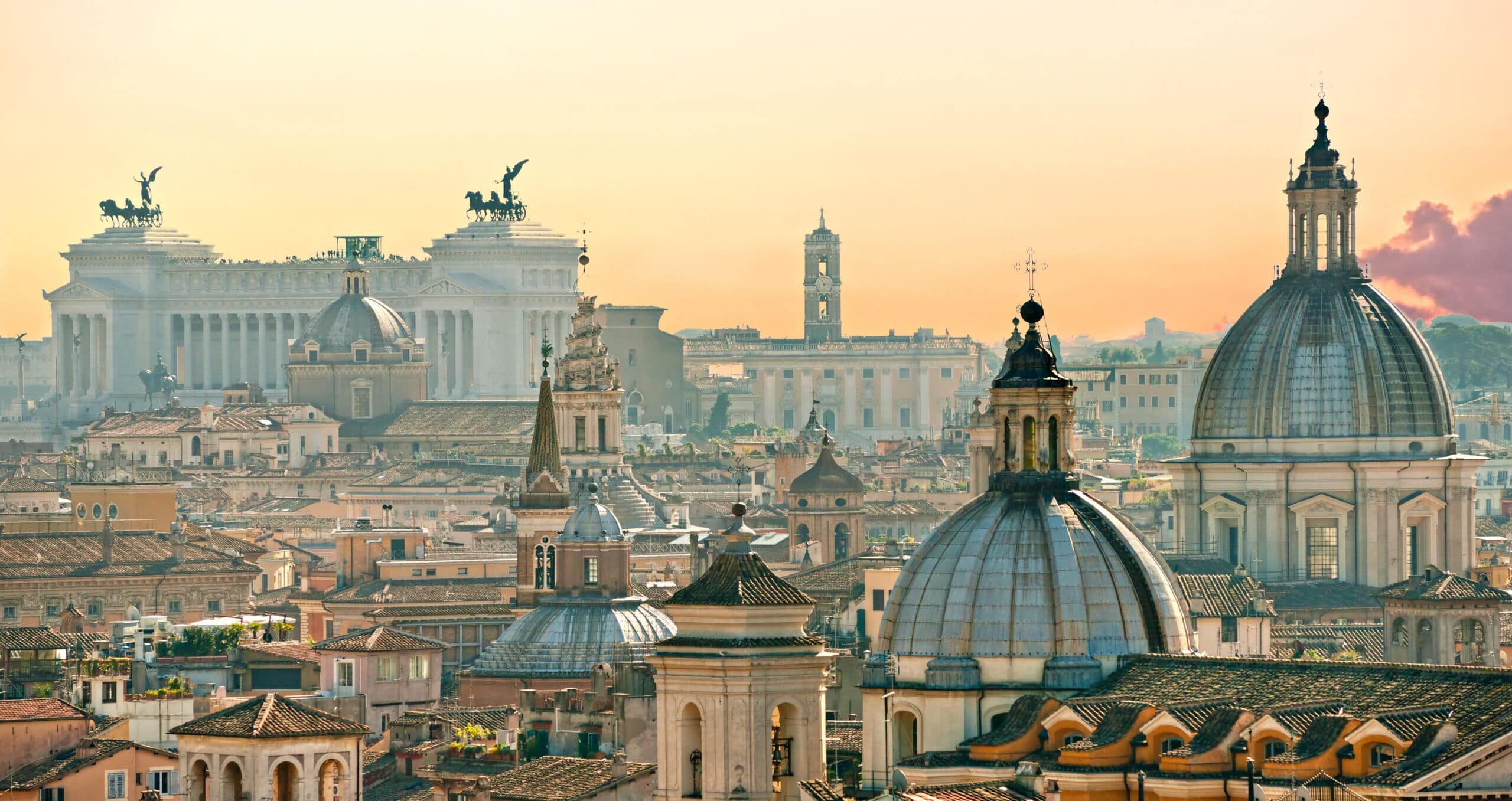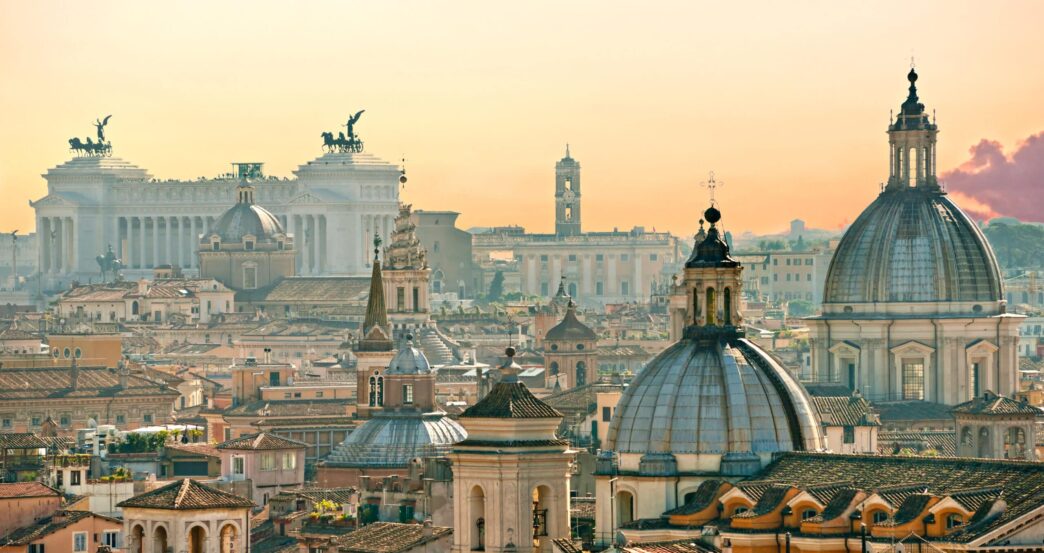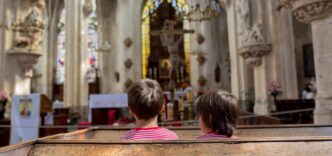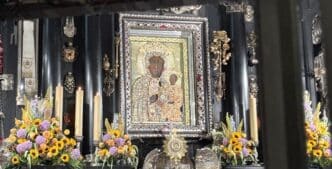My first time teaching in DeSales University’s study abroad program, I stayed in the Roman neighborhood known as Trastevere. One day, after meeting up with my students near my apartment, we took the tram up the main road, Viale Trastevere, and were headed to “Old Rome” for dinner near Piazza Navona. At a red light, I glanced to my right and noticed the house where Dante Alighieri had lived for a time. I turned to my students, pointed at the house, and said, “Look, guys, that is the home of Dante Alighieri!” Whereupon one young fellow in the group, a theology major and a quite good student, said to me with a straight face, “Who is Dante Alighieri?”
To say that I was floored is an understatement. How could a college junior who is a theology major at a Catholic university and who attended a Catholic high school not know who the great Dante was? My initial reaction was one of anger — not at the student but at our educational system — and I began rolling around in my head various arguments for why the world is going to hell in a handbasket, with this incident as yet one more example of our decline into mediocrity.
But as I pondered the situation, I set my anger aside and decided instead to build on the opportunity. I turned to the students and said, “Let’s get out at the next stop and pop over to Dante’s house.” Which we did; we spent about half an hour there as I used the house where Dante had actually lived as an effective backdrop for discussing who he was, what he had written and why he is still significant.
A catechism in stone
The point here, of course, is that this opportunity would never have arisen had we not been in Rome and a stone’s throw away from one of the homes of the greatest Italian poet who ever lived. There is history and spirit in the very architecture of Rome that not only “teach” history, but also drive home the fact that the people and events associated with the architecture and monuments were real people and real events in time and space.
I had a similar experience with my students as we were wandering around the area known as Largo Argentina and realized for the first time that this is most likely where Julius Caesar was assassinated. To Americans, so used to Disney-World-style animatronic imitations of the really real, it is hard to get our minds around the fact that these monuments and places are not facsimiles of the real thing, but the actual real thing. Once again, I used the opportunity to drive home to my students why Gaius Julius Caesar was so important and how his legacy changed the world forever. That the Rubicon, though a small and narrow stream, once traversed by Caesar, marked a turning point in world history.
But the strongest reason why a study abroad experience in Rome is so beneficial is that it is a catechism in stone and a powerful witness to the truth of the Catholic faith. One can teach in a classroom in Pennsylvania that St. Peter’s Basilica is built over the mortal remains of St. Peter, but it will not have the same effect as praying a few feet away from St. Peter’s tomb. Or better yet, taking the “Scavi tour” of the first-century Roman cemetery beneath St. Peter’s, where you walk on stones 2,000 years old as you pass the tombs of first-century Romans on your way to the bones of Peter just below the high altar. It’s a never-to-be-forgotten experience that sends chills down the spine of any Catholic.
And there is no classroom substitute for that experience. Likewise with visiting the tomb of St. Paul at the magnificent Basilica of St. Paul Outside the Walls, which stands very near the place where St. Paul was beheaded and then buried. What Christian is not moved and does not have his faith deepened as he kneels before the visible tomb of St. Paul, encased in glass, under the high altar?
Jesus is real, bro
Once again, what strikes one is that the people mentioned in the Scriptures were real people, which underscores the fact that Jesus was a real person and that these people knew him. What gets emphasized, therefore, is that the Bible is no mere mythology, no fantasy of a runaway imagination or crazy religious enthusiasm, and that what it recounts is real history, with real people engaged in real events. As with the experience of the reality of Dante and Caesar that comes from being in Rome, so too with Peter, Paul and many other apostles and saints.
Only the most callous and indifferent of souls will fail to be influenced by these historical realities in stone. For any Catholic of even a modicum of faith, the experience can be life-changing. My own wife is an example of this. While an undergrad at Notre Dame she spent a semester in Rome, and she was transformed from a rather typical Sunday-Mass-only kind of Catholic into someone on fire for the Faith. She now has a doctorate in theology and is a dean at a Catholic seminary. And in her own words, the transformation was caused by the realization, while in Rome, that Peter and Paul and the other apostles, and Jesus himself, were all real people and not mere historical abstractions.
Where the supernatural and the natural meet
I had my own powerful experience while in Rome as well. I was wandering around the area near Piazza Navona rather aimlessly one day when I stumbled across the Basilica of St. Augustine. I went in and was marveling at the great Renaissance and Baroque art inside when I noticed, off to the left and at the far end of the church from the entrance, what appeared to be someone’s tomb. I wandered back to see who it might be. It was the tomb of St. Augustine’s mother, St. Monica, one of the greatest female saints in the history of the Church.
I just stood there for a moment with my mind numb, trying to process that here were the remains of a woman who lived 1,700 years ago, a woman who had been integral in the conversion of her son, one of the greatest and most influential theologians in history. But what really struck me was that it was all so low-key and in no way highlighted. There were no glaring signs outside the church and no way to know, outside of travel books, that she was even there. The anonymity and humility of it all struck me deeply.
I fell to my knees and prayed intensely for all the parents I know who have children who have fallen away from the Faith. And then I paused and thought to myself, “What kind of place is this, this Rome, where such things as the tomb of Augustine’s mother are ordinary occurrences and found in every corner of the city!”
This is why we should send our students to Rome. Because it is a city where the extraordinary is ordinary, and where the supernatural and the natural meet and embrace in a manner that no other place in the world, except the Holy Land itself, can claim.
Yes, Rome can be very hot, crowded, noisy, dirty and gritty. There are beggars and homeless people everywhere, graffiti on many a wall, as well as pickpockets and hucksters of all kinds in most of the piazzas. And yet I love it. I love all of it. I love it because here the supernatural roots of the Faith are made flesh and continue to dwell among us. There is no greater need in educating today’s young students than to make Christianity wild and weird again precisely by making it enfleshed again. And there is no greater city within which this can happen.








